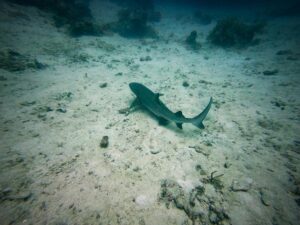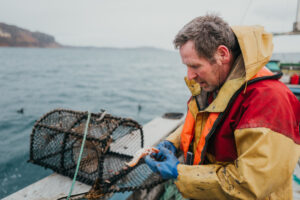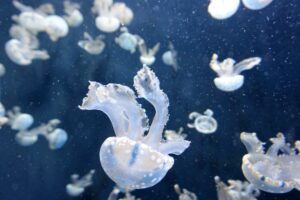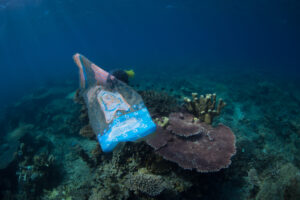Florida manatee denied same 'endangered' status as Antillean
The Florida manatee and the Antillean manatee of Puerto Rico are subspecies of the same West Indian manatee yet, despite sharing similar environmental threats and habitat degradation, have now been offered different conservation protection status by the US Fish and Wildlife Service
A decision from the US Fish and Wildlife Service last week over the conservation status of both the Florida and the Antillean manatee of Puerto Rico has left the manatee conservation community with mixed emotions, with one subspecies now approved for an increased ‘endangered’ status and the other denied it.
Responding to a petition submitted by Harvard Law School’s Animal Law & Policy Clinic on behalf of the Centre for Biological Diversity and a consortium of Florida-based conservation groups, the federal service decided last week to deny the Florida manatee greater ‘Endangered Species Act’ protections, drawing disappointment from those that have been campaigning for an up-ticked status since 2022.
The consortium – which includes Save the Manatee Club, Miami Waterkeeper, and Frank S. Gonzalez Garcia – wanted to see protections for the Florida manatee increased from its current ‘threatened’ status to ‘endangered’.
Despite this Service’s decision not to go ahead with the call, it was, however, a privilege afforded to the closely-related and equally-threatened Antillean manatee.
“It’s great news that Puerto Rico’s Antillean manatees finally won the endangered status they need to get on the road to recovery, but I’m disappointed the Fish and Wildlife Service didn’t give Florida manatees the same protection,” said Regan Whitlock, a Florida-based attorney with the Centre for Biological Diversity.
“The agency’s denial completely failed to account for the ongoing die-off that is weakening the manatees’ chance at long-term survival. Thousands of manatees have starved to death in the last few years, and that should have been accounted for.”
The West Indian manatee, including both the Florida and Puerto Rico subspecies, was previously downlisted to threatened in 2017. At the time, despite warnings from conservation organisations, the Service failed to consider the possibility that an unusual mortality event was on the horizon in the Indian River Lagoon.
The Centre for Biological Diversity argues that the Florida manatee has now ‘endured more than three years of a devastating die-off event’ in which more than 2,000 manatees have starved to death. Despite having the mortality data on this, the Service denied the campaign to increase their protection status from ‘threatened’ to ‘endangered’.
An increase in those protections would have leveraged the reach of the Endangered Species Act, a framework billed as one of the most powerful tools for preventing extinction and helping vulnerable species recover. To date, it has proven to be 99% effective at preventing species under its protection from going extinct.

“While we are disappointed by the Fish and Wildlife Service’s decision not to extend endangered status to all West Indian manatees, we are pleased that the agency acknowledged the endangered status of the Antillean manatee,” said Mary Hollingsworth of Harvard’s Animal Law & Policy Clinic. “We remain steadfast in our commitment to advocate for the conservation of all West Indian manatees.”
The decision not to move the protection status up a notch came as a contradiction to previous indicators from the Service that enough data had been provided to do so. Prior to the decision this month, the Service has previously issued a 90-day finding indicating the petition presented ‘substantial information’ that increasing protections ‘may be warranted’. At the time, the agency found that as seagrass dwindles as a direct result of water pollution, Florida manatees ‘may need greater protections’.
But, despite recognition from both the Environmental Protection Agency and the Service that water-quality standards in the Indian River Lagoon – one of the most ecologically important estuaries for the species – aren’t currently being, the decision has seemingly dismissed these concerns and those raised over the dwindling seagrasses across the Florida coastline.
“Sadly, it appears the Service has repeated its previous grievous mistake by once again failing to incorporate the best available scientific information as it relates to the well-documented Unusual Mortality Event of thousands of Florida manatees from starvation,” said Patrick Rose, an aquatic biologist and executive director of Save the Manatee Club.
“Instead, it has denied the manatees the full strength of the Endangered Species Act at a time when current risks and threats to Florida manatees are rapidly accelerating due to water quality degradation and climate change.”
Unchecked pollution from sources such as wastewater treatment discharges, leaking septic systems, and fertilizer run off has been largely blamed for the degradation of the water quality across the state. This, in turn, has led to the ‘precipitous decline’ in seagrass around its coast, fuelling the collapse, say campaigners, of the Indian River Lagoon. It’s this which has driven the unprecedented mortality event in which almost 2,000 manatees died in 2021 and 2022 combined. This two-year record represents more than 20% of all manatees in Florida.
The federal agency has said, however, that seagrasses in the Indian River Lagoon are rebounding and that ‘gains’ in the Florida manatee’s population and habitat meant it did not fit the definition of ‘endangered’.
Under the Endangered Species Act, an endangered animal is at risk of extinction throughout all or most of its range, while a threatened animal is likely to become endangered in the near future. The Service also argues that ‘protections are the same regardless of classification’, and the Florida manatee recovery programme will continue undiminished.
Florida’s manatee conservation groups insist, however, that the decision largely ignores a looming truth about the degradation of habitats and food sources for the species along the Florida coastline.
“The failure to up-list Florida’s manatee ignores the widespread population declines that manatees have suffered, as well as the severity of the ongoing threats to the survival of the species – particularly from seagrass loss due to water pollution,” said Dr Rachel Silverstein, executive director and waterkeeper of Miami Waterkeeper.
Conversely, the Antillean population of manatees has now been proposed for ‘endangered’ status. The timing is right, as they too face significant threats. Current estimates suggest as few as 250 manatees currently live in Puerto Rico. The population’s genetic diversity is also very low, which decreases manatees’ ability to adapt to changing conditions and rebound after unexpected mortality events, such as hurricanes, boast strikes, or disease.
“This is one small, late step forward for Puerto Rico’s Antillean manatees, but a wasted opportunity for the recovery and protection of Florida manatees,” said Frank S. Gonzalez Garcia, a Puerto Rican engineer concerned about the loss of natural resources.
“Both subspecies face extremely high mortality rates and risk of extinction, vastly due to an ever-increasing plethora of diverse, unfavourable human activities and conditions.”


"*" indicates required fields






